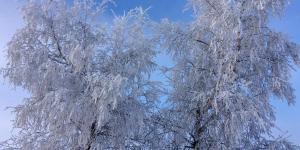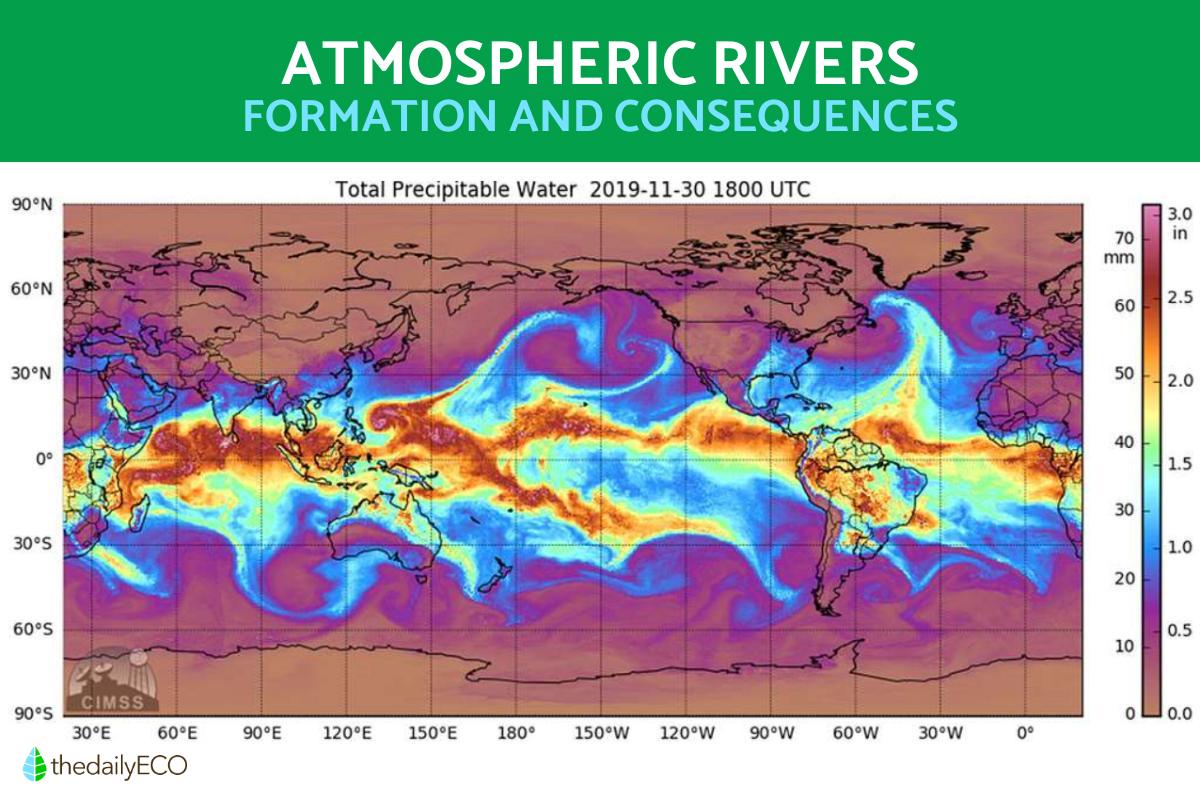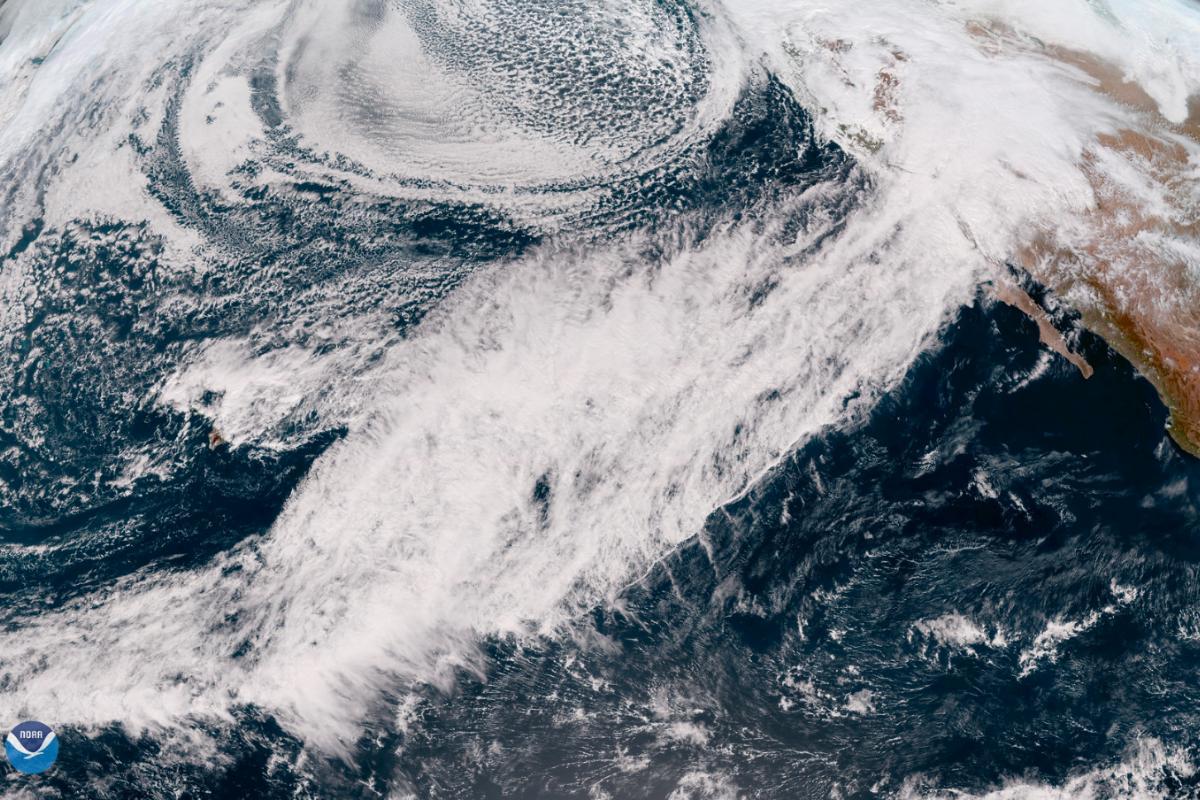What Is an Atmospheric River and How Is It Formed?


Atmospheric rivers are currents of concentrated water vapor in the Earth's atmosphere. These meteorological phenomena act on the global distribution of humidity and the regulation of our climate. These currents are capable of transporting enormous amounts of moisture over long distances, significantly influencing the weather and climate conditions of the regions they pass over. They can lead to atmospheric river storms, requiring their continual study in terms of formation so meteorologists can best predict inclement weather.
At thedailyECO, we ask what are atmospheric rivers and how are they formed? In addition to their formation, we look at their characteristics and consequences for ecosystems, especially when atmospheric river storms are created.
What is an atmospheric river?
The lower troposphere of Earth's atmosphere contains a unique feature created by concentrated moisture known as an atmospheric river. This typically takes the form of a long, narrow band spanning several thousand miles, sometimes described as a moisture corridor. This atmospheric phenomenon serves as a conduit to transport significantly greater amounts of water vapor compared to surrounding regions.
Atmospheric rivers extend for thousands of kilometers and will persist for several days. They are often linked to the prefrontal warm sectors of cold fronts. These phenomena are particularly notable during the winter months, when atmospheric activity is at its peak. While not the primary causers, they can contribute to the development of storms. In this way, we can say that atmospheric river storms are storms influenced by this high level of atmospheric moisture.
Satellite images of water vapor reveal the presence of three to five atmospheric rivers at any given time. These include over the oceans and in each hemisphere. Approximately 90% of the moisture flux in the southern hemisphere can be attributed to atmospheric rivers. Additionally, these atmospheric rivers play a role in the transfer of latent heat from tropical latitudes to higher latitudes.
Acting as conduits, atmospheric reivers function as pathways for the dispersion of moisture from tropical or subtropical regions to various latitudes around the world. Upon reaching continental areas, where conducive circumstances exist, these substantial amounts of moisture have the potential to condense and precipitate. This typically causes periods of atmospheric river storms characterized by heavy rain and, in certain cases, flooding.
How is an atmospheric river formed?
The formation of an atmospheric river can be influenced by several factors. Generally speaking, atmospheric rivers are formed by the following process:
- Pressure movement: one of the most important factors is the presence of areas of high and low atmospheric pressure. When there is a significant pressure difference between two regions, air tends to move from the high-pressure region toward the low-pressure region, creating atmospheric airflow.
- Water evaporation: when this airflow passes over areas with high temperatures, such as warm oceans or tropical regions, water evaporates more easily. This increases the amount of water vapor in the atmosphere. This water vapor rises with warm, humid air, forming clouds and contributing to the development of weather systems such as storms and cyclones. Learn more about how clouds are formed.
- Water buildup: if conditions are favorable, these air flows that continue to accumulate water vapor can persist for several days or even weeks, forming what is known as an atmospheric river. These rivers can transport enormous amounts of moisture over long distances, affecting the climate and precipitation in the regions they pass through.
- Topography: can also influence the formation and behavior of atmospheric rivers. When a flow of warm, moist air encounters a natural barrier, such as a mountain range, the air is forced to rise. As the air rises, it cools and condenses, which can cause heavy rain and snowfall on the windward side of the mountain. Learn more about how mountains can influence weather phenomena with our article on the albedo effect on climate.
Atmospheric rivers are important to the Earth's hydrological cycle, transporting moisture from areas of excess to those where moisture is scarce. They can also have negative consequences, such as flash flooding and landslides due to atmospheric river storms. This is especially so when rainfall is extremely heavy or concentrated in vulnerable areas.
Learn more about the effects and consequences of flooding in our related guide.

Consequences of an atmospheric river
The consequences of an atmospheric river are varied. While we may associate them with inclement weather, they can have both positive and negative impacts on the regions they pass over. The following are the most important consequences of atmospheric rivers:
- Abundant precipitation: one of the most notable effects of an atmospheric river is the delivery of large amounts of precipitation along its path. This rainfall can be beneficial in areas experiencing drought, as it helps replenish water resources such as reservoirs and aquifers, revitalizing vegetation in the process. If rainfall is excessive, it can cause flooding and other natural disasters such as landslides.
- Snow and blizzards: in regions with colder temperatures, atmospheric rivers can carry large amounts of moisture that condense and precipitate as snow. This can result in intense snow storms that paralyze daily activities, disrupt transportation and cause property damage.
- Changing weather patterns: atmospheric rivers alter local and regional weather patterns, affecting temperatures, humidity and the frequency of extreme weather events. For example, they are capable of increasing humidity and rainfall in areas that are normally arid or bringing prolonged periods of drought to regions that depend on regular rainfall for agriculture and other purposes.
- Impact on agriculture and biodiversity: precipitation provided by atmospheric rivers often has a significant impact on the agriculture and biodiversity of a region. Although torrential or abundant rains are usually beneficial for crops, they can also cause flooding that damages them. This also harms the natural habitat of local fauna. On the other hand, lack of precipitation can lead to prolonged droughts that threaten food security and the survival of plant and animal species.
- Risks to infrastructure and human safety: floods, landslides and other natural disasters associated with atmospheric rivers pose significant risks to infrastructure and human safety. Infrastructure such as roads, bridges, buildings and drainage systems may be damaged or destroyed. This negatively affects mobility and access to basic services.
After learning about what an atmospheric river is and its formation, you may want to know about other atmospheric effects on Earth with our article on what is the cause of the Coriolis effect?
If you want to read similar articles to What Is an Atmospheric River and How Is It Formed?, we recommend you visit our Meteorological phenomena category.






